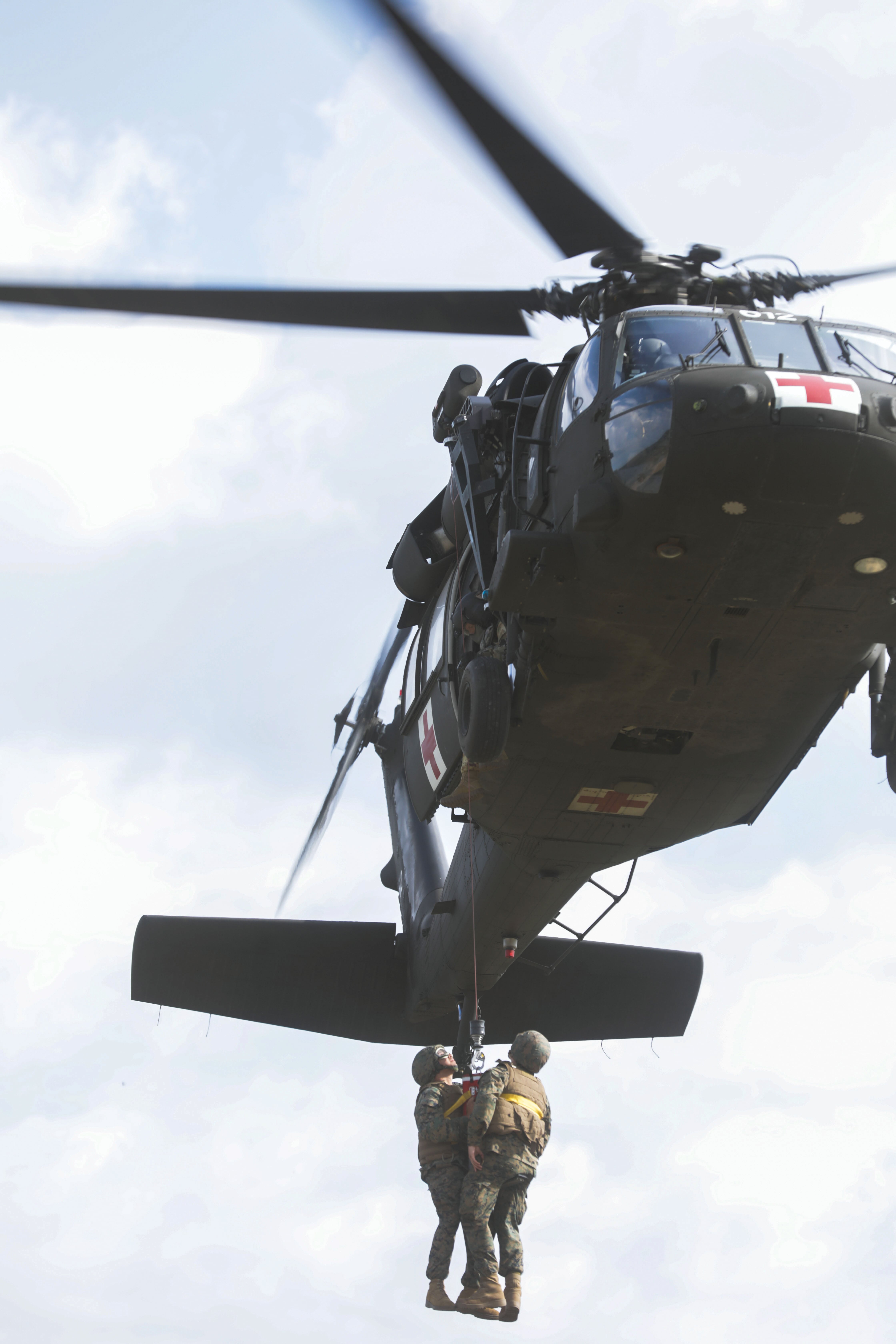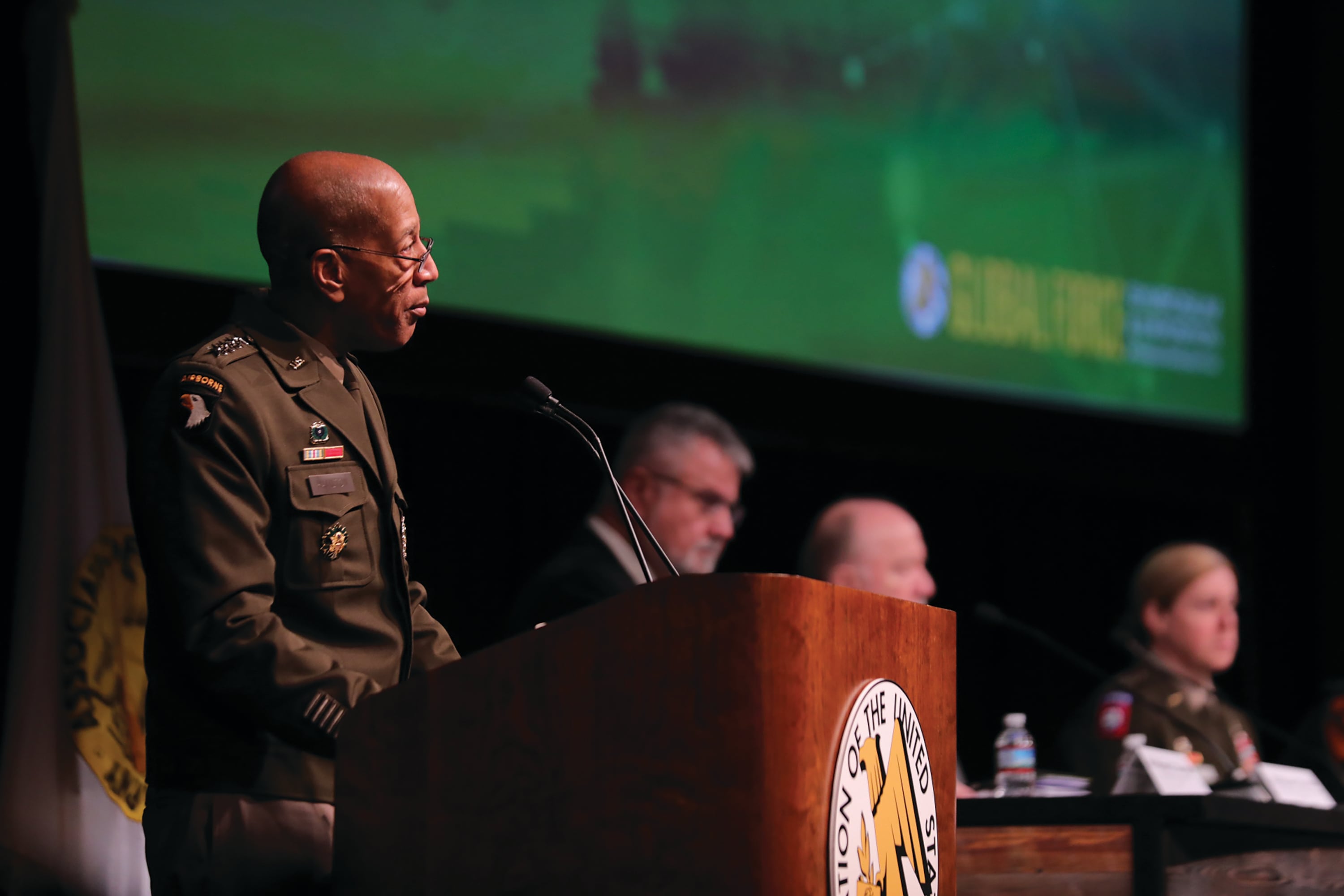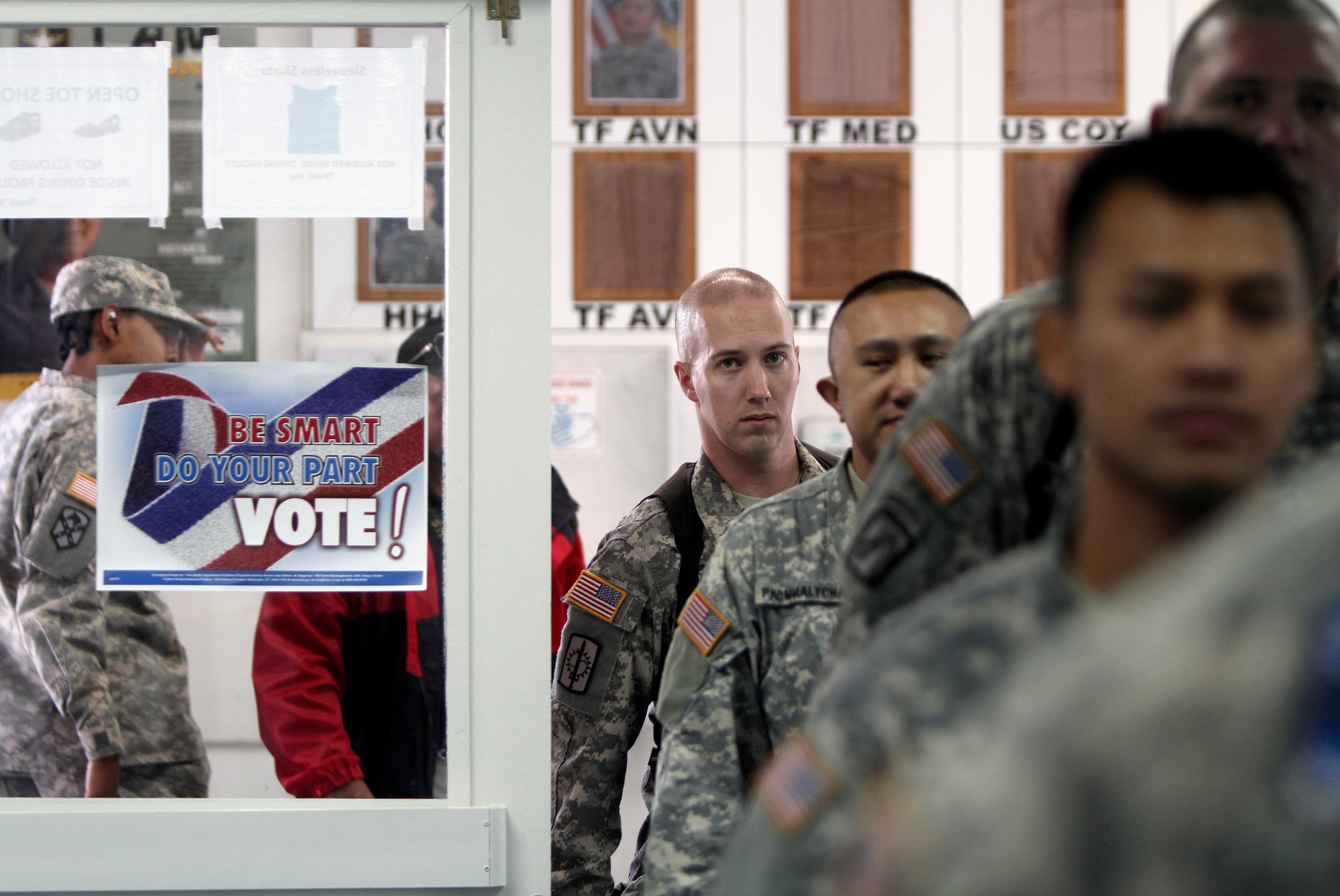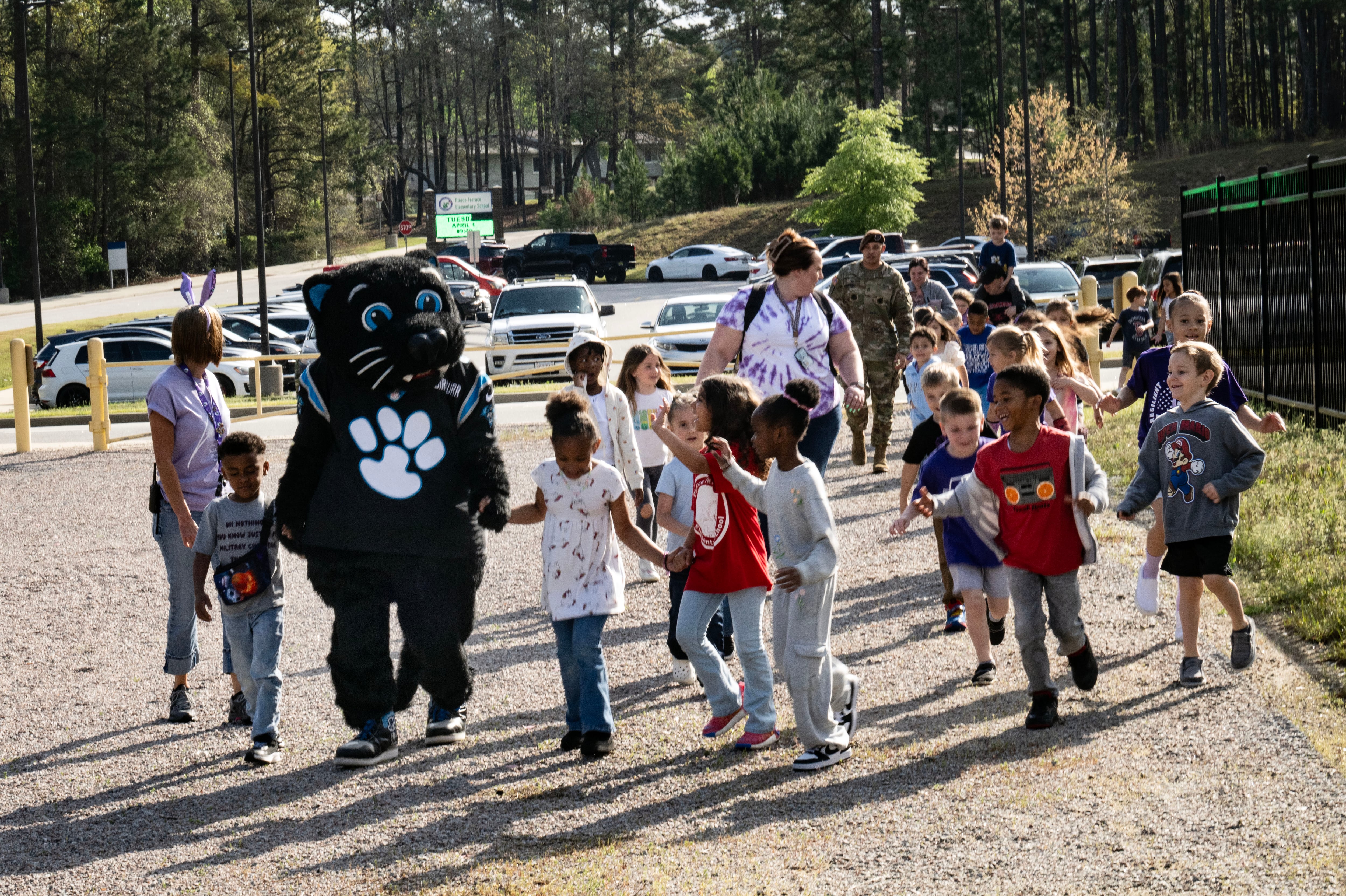WASHINGTON — The U.S. Army’s newest cross-functional team will focus on sustaining the force in real time, reducing logistics demands, improving supply distribution and providing power effectively on the battlefield, according to a top service official.
Russia’s invasion of Ukraine has reminded the Army it can no longer rely on uncontested sustainment and logistics. The service is acknowledging it must adapt its approach to logistics to prepare for an adversary such as China and operate in one of the most challenging places on Earth.
When the Army published its Multi-Domain Operations doctrine last year, it included a nine-page annex focused on the challenge of contested logistics. Army Secretary Christine Wormuth appointed Army Materiel Command to lead service efforts to determine how to deploy troops with weapons and equipment in an environment where they cannot expect to travel freely.
In the spring, Army Futures Command stood up the Contested Logistics Cross-Functional Team to address the issue. Willie Nelson, a deputy to the command’s chief, told Defense News the team already declared initial operational capability and hopes to reach full operational capability by the end of the year.
The team, based at Redstone Arsenal, Alabama, has named its first director, Col. Shane Upton.
The service has started examining how it would design its logistics tail in a contested environment; experimenting with hybrid power, autonomous aircraft, watercraft and vehicles; and developing, in real time, systems that help provide more precise estimates of sustainment needs on a modern battlefield.
But it’s now pursuing four lines of effort to approach contested logistics problem sets, Nelson said.
Looking to data
One of Army Materiel Command’s top priorities is determining how to precisely track what is used on the battlefield so the service can better estimate how much equipment, spare parts, munitions, fuel and batteries troops need, Gen. Charles Hamilton, the command’s chief, told Defense News in an interview.
Hamilton said AMC has developed a predictive analysis suite that allows the service to predict prognostic and preventive maintenance. Data coming in, Hamilton explained, “has allowed us to get left of a lot things that normally we wait for something to break or something runs out before we act.”
The monitoring capabilities in Ukraine also changed the Army’s thought process on sustainment. “What we clearly saw from this tool is, we used to say, ‘factory to foxhole’ — that was always a big thing. Now we’re saying ‘foxhole to factory.’ We are are letting the requirements at the tactical level, the foxhole level, drive the industrial base and drive the organic industrial base,” Hamilton said.
Much of the work AMC is already doing in this area will feed into the cross-functional team’s efforts to accelerate them. For example, the CFT will seek to advance more rapidly an automated preventative maintenance capability, which has been in prototyping for years, according to Nelson.
The CFT will look at applications using artificial intelligence and machine learning to be able to provide precision sustainment, Nelson said.
“Think of a situation where you’re having an ability to understand how rapid[ly] you’re firing weapons, that is providing feedback directly to not only the commander and the warfighters, but your logisticians who are then providing just-in-time resupply or resupply at the rate of fire,” Nelson said. “Those are nirvana types of scenarios, but generally speaking the data and our ability to move data is making us get closer and closer to that type of reality.”
Demand reduction
The Army wants to ensure it can lighten the logistics tail and is pursuing ways to reduce battlefield demand when it comes to parts, fuel, batteries and water, Nelson noted, but one way to gain efficiencies is through hybrid energy technology and pursuing alternatives to fossil fuels.
Incorporating hybrid technology would reduce demand for gas and also give vehicles the ability to travel farther for longer periods of time, Nelson said.
Making vehicles like Humvees and Joint Light Tactical Vehicles hybrid also has a significant warfighting benefit, Nelson noted, because they could run sensors and systems with the engine off, avoiding a heat signature for the enemy to detect while also saving gas.
The Army has already done a great deal of work examining the possibility of making tactical wheeled vehicles and combat vehicles in hybrid versions, and could convert some platforms in the coming years.
As a means to tackle “demand reduction,” as the CFT is calling the line of effort, it is pursuing ways to reduce the weight of tanks and other vehicles, according to Nelson.
However, the Army will not sacrifice protection, Nelson noted, so the service is looking at technologies, such as additive manufacturing using nonmetal or ceramic materials.
Special delivery
The CFT will also tackle improving supply distribution to the battlefield.
In particular, Nelson said, the Army is interested in pursuing autonomous resupply capability. While the service has looked at a variety of capabilities and experimented in this area, this capability is not ready for prime time.
Autonomous resupply would reduce operating expenses, costs and manpower, Nelson said.
The service will look at a wide variety of options from manned-unmanned teaming to semi-autonomous ground-, air- and water-based platforms. “How do we get stuff from the point of origin to the point of need in a most expeditious way? How do we bring autonomy into that?” Nelson wondered.

While plenty of development work remains, he added, there is some technology that’s ready for the CFT to pursue when it comes to water or air resupply. Some could be drawn from industries like oil and gas, he noted.
At previous iterations of the large-scale exercise Project Convergence, the Army demonstrated autonomous resupply using UH-60 Black Hawk helicopters. “Is it perfect? No,” Nelson said, “but it starts to open up other ideas. Could you do [casualty evacuation]? Could you do medical evacuation?”
AMC’s Hamilton said autonomous resupply will “be huge.”
“I am all in,” he added.
The commander also said he recently tasked the Contested Logistics CFT to not just think about autonomous resupply in a defensive posture but from an offensive perspective as well, including the idea of using autonomous resupply decoys with explosives to deter the enemy.
“If you pick the wrong one, you may get blown up. It may look like a sustainment convoy, but it might be something else,” he said.
Charged up
The Army needs to determine how it can use advanced power on the battlefield, according to Nelson, and it has already started this effort, including considering technology that manufactures water out of air.
But one of the more mundane issues is addressing the rechargeable batteries in the field.
The CFT will work with the acquisition branch to achieve a level of standardization around batteries.
“We’re at some unbelievable number of different types of batteries across the force, be it with a dismounted soldier that powers a radio or powers another thing, all the way up to vehicle batteries,” Nelson said.
While vehicle batteries are becoming more standardized, it’s more difficult to develop a standard for small, light, rechargeable batteries, he added.
Recharging batteries is another challenge. Using gas-filled generators works to charge batteries (as well as power command posts, for example), but the Army won’t want to drag a bunch of generators to the battlefield in the future, Nelson said.
AMC’s Hamilton agreed the Army needs alternatives to generators. “We’ve got to get rid of the generator. I’ve got to get to batteries. They’re quieter, they are lighter,” he said.
Jen Judson is an award-winning journalist covering land warfare for Defense News. She has also worked for Politico and Inside Defense. She holds a Master of Science degree in journalism from Boston University and a Bachelor of Arts degree from Kenyon College.




